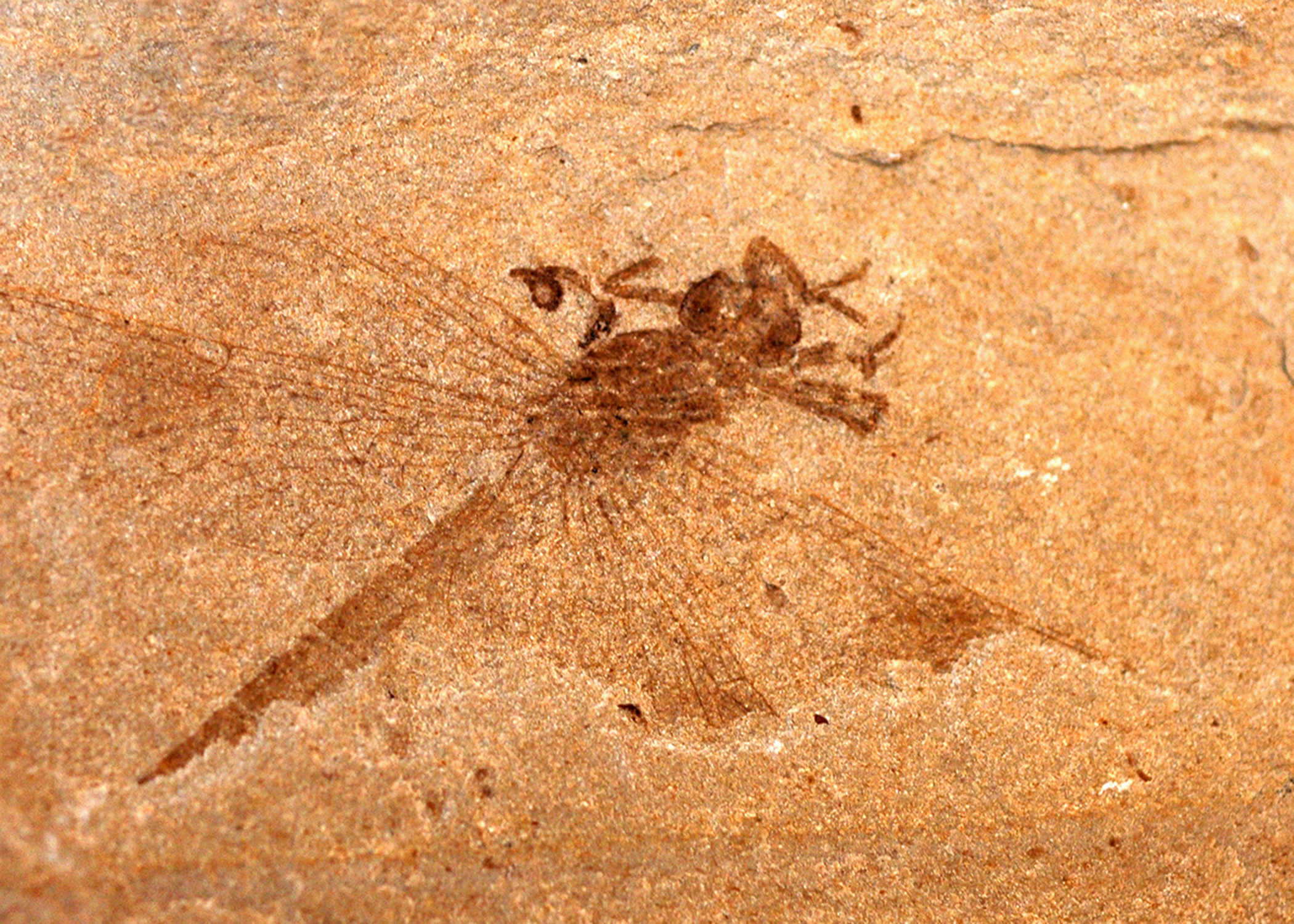Abstract
Lebanon is worldwide famous in Palaeontology for its rich Late Cretaceous marine fish deposits in Haqel, Nammoura and Hjoula. Recently, the two latter outcrops yielded surprisingly some complete and none-dislocated fossil insects (Azar et al., 2019; Vršanský & Makhoul, 2013; Nel et al., 2004), indicating a particular depositional marine palaeoenvironment, close to a palaeoshoreline during the mid-Cenomanian.
References
- Azar, D., Maksoud, S., Huang, D.Y. & Nel, A. (2019) First Lebanese dragonflies (Insecta: Odonata, Aeshnoptera, Cavilabiata) from the Arabo-African mid-Cretaceous paleocontinent. Cretaceous Research, 93, 78–89. https://doi.org/10.1016/j.cretres.2018.08.025
- Ataabadi, M.M., Bahrami, A., Mehdi Yazdi, M. & Nel, A. (2019) A locust witness of a trans-oceanic Oligocene migration between Arabia and Iran (Orthoptera: Acrididae). Historical Biology, 30 (5), 574–580. https://doi.org/10.1080/08912963.2017.1378651
- Barrier, E. & Vrielynck, B. (2008) Palaeotectonic Maps of the Middle East: Tectono-Sedimentary-Palinspastic Maps from Late Norian to Pliocene. Atlas of 14 maps at 1/18 500 000. Publisher CGMW, Paris, France.
- Beaury, B., Krogmann, L. & Nel, A. (2017) The first fossil insect from the deep-water marine Early Miocene of Zillerleite, Germany (Diptera: Bibionidae). Palaeontologia Electronica, 20 (3), 1–5, 61A. https://doi.org/10.26879/827
- Bechly, G., Nel, A., Martínez-Delclos, X., Jarzembowski, E.A., Coram, R., Martill, D., Fleck, G., Escuillié, F., Wisshak, M.M. & Maisch, M. (2001) A revision and phylogenetic study of Mesozoic Aeshnoptera, with description of several new families, genera and species (Insecta: Odonata: Anisoptera). Neue Palaontologische, Abhandlungen, 4, 1–219.
- Botta, P.E. (1833) Observations sur le Liban et Anti-Liban. Mémoires de la Société Géologique de France, 1, 135–160.
- Dubertret, L. (1945) Carte géologique au 1:50000, feuille de Jbail. Carte géologique de la Syrie et du Liban. Délégation générale de France au Levant, Section géologique.
- Dubertret, L. (1959) Contribution à la stratigraphie et à la paléontologie du Crétacé et du Nummulitique de la marge N.W. de la peninsule arabique. Notes et Mémoires sur le Moyen-Orient, 7, 193–220.
- Dubertret, L. (1966) Liban, Syrie et bordure des pays voisins. Tableau stratigraphique avec carte geologique au millionième. Notes et Mémoires sur le Moyen-Orient, 8, 251–358.
- Dubertret, L. & Wetzel, W.C. (1945) Carte géologique au 1:50000, feuille de Qartaba. Carte géologique de la Syrie et du Liban. Délégation générale de France au Levant, Section géologique.
- Fraas, O. (1878) Geologisches aus dem Libanon. Jahreshefte des Vereins für vaterlandische Naturkunde in Württemberg, 34, 257–391.
- Fuchs, D., Bracchi, G. & Weis, R. (2009) New octopods (Cephalopoda: Coleoidea) from the Late Cretaceous (Upper Cenomanian) of Hakel and Hadjoula, Lebanon. Palaeontology, 1, 65–81. https://doi.org/10.1111/j.1475-4983.2008.00828.x
- Gandolfi, R. (1942) Ricerche micropaleontologiche e stratigrafiche sulla Scaglia e sul Flysch cretacici. Revista Italiana di Paleontologia, Memoria, 4, 1–160.
- Hemleben, C.V. (1977) Rote Tiden und die oberkretazischen Plattenkalke im Libanon. Neues Jahrbuch für Geologie und Palaontologie, Monatshefte, 4, 239–255.
- Hückel, U. (1970) Die Fischschiefer von Haquel und Hajoula in der Oberkreide des Libanon. Neues Jahrbuch für Geologie und Paläontologie—Abhandlungen, 135, 113–149.
- Kellner, A.W.A., Caldwell, M.W., Holgado, B., Dalla Vecchia, F.M., Nohra, R., Sayão, J.M. & Currie, P.J. (2019) First complete pterosaur from the Afro-Arabian continent: insight into pterodactyloid diversity. Scientific Reports, 9, 17875. https://doi.org/10.1038/s41598-019-54042-z
- Krassilov, V. & Bacchia, F. (2000) Cenomanian florule of Nammoura, Lebanon. Cretaceous Research, 21, 785–799. https://doi.org/10.1006/cres.2000.0229
- Lamarck, J.B.P.A. de M. (1816) Liste des objets représentés dans les planches de cette livraison. Tableau encyclopédique et méthodique des trois règnes de la nature. Vers, coquilles, mollusques et polypiers. Agasse, Paris, 16 pp.
- Latreille, P.A. (1802–1805) Histoire naturelle, générale et particulière des Crustacés et des Insectes: ouvrage faisant suite aux œuvres de Leclerc de Buffon, et partie du cours complet d´Histoire naturelle rédigé par C.S. Sonnini. 14 vols. F. Dufart, Paris. https://doi.org/10.5962/bhl.title.15764
- Lewis, E.R. (1878) The fossil fish localities of the Lebanon. Geological Magazine, 2, 214–220. https://doi.org/10.1017/S001675680014676X
- Morrow, A.L. (1934) Foraminifera and Ostracoda from the Upper Cretaceous of Kansas. Journal of Paleontology, 2, 186–205.
- Nel, A., Azar, D., Martínez-Delclòs, X. & Makhoul, E. (2004) A new Upper Cretaceous species of Chresmoda from Lebanon—a latest representative of Chresmodidae (Insecta: Polyneoptera inc. sed.): first record of homeotic mutations in the fossil record of insects. European Journal of Entomology, 101 (1), 145–151. https://doi.org/10.14411/eje.2004.019
- Patterson, C. (1967) New Cretaceous berycoid fishes from the Lebanon. Bulletin of British Museum of Natural History Geology, 14, 69–109.
- Philip, J., Babinot, J.F., Tronchetti, G., Fourcade, E., Azema, J., Guiraud, R., Bellion, Y., Ricou, L.E., Vrielynck, B., Boulin, J., Cornee, J.J. & Herbin, J.P. (1993) Late Cenomanian Palaeoenvironments (94–92 Ma). In: Dercourt, J., Ricou, L.E. & Vrielynck, B. (Eds), Atlas Tethys Palaeoenvironmental Maps. BEICIP-FRANLAB, Rueil-Malmaison.
- Saint-Marc, P. (1974) Etude stratigraphique et micropaléontologique de l’Albien, du Cénomanien et du Turonien du Liban. Notes et Mé-moires sur le Moyen-Orient, 13, 8–42.
- Shumard, B.F. (1860) Descriptions of new Cretaceous fossils from Texas. Transactions of the Academy of Sciences of St. Louis, 1, 560–610.
- Sowerby, J. (1812–1814) The mineral conchology of Great Britain; or coloured figures and descriptions of those remains of testaceous animals or shells, which have been preserved at various times and depths in the earth, vol. 1. Benjamin Meredith, Silver Street, Wood Street, Cheapside, 235 pp. https://doi.org/10.5962/bhl.title.14408
- Vršanský, P. & Makhoul, E. (2013) Mieroblattina pacis gen. et sp. n.—Upper Cretaceous cockroach (Blattida: Mesoblattinidae) from Nammoura limestone of Lebanon. In: Azar, D., Engel, M.S., Jarzembowski, E., Krogmann, L., Nel, A. & Santiago-Blay, J. (Eds), Insect Evolution in an Amberiferous and Stone Alphabet, pp. 167–172.
- Walley, C.D. (1997) The lithostratigraphy of Lebanon: a review. Lebanese Science Bulletin, 1, 81–107.
- Wippich, M.G. & Lehmann, J. (2004) Allocrioceras from the Cenomanian (mid-Cretaceous) of the Lebanon and its bearing on the palaeobiological interpretation of heteromorphic ammonites. Palaeontology, 5, 1093–1107. https://doi.org/10.1111/j.0031-0239.2004.00408.x
- Zumoffen, G. (1926) Géologie du Liban. H. Barrère, Paris, 165 pp.


